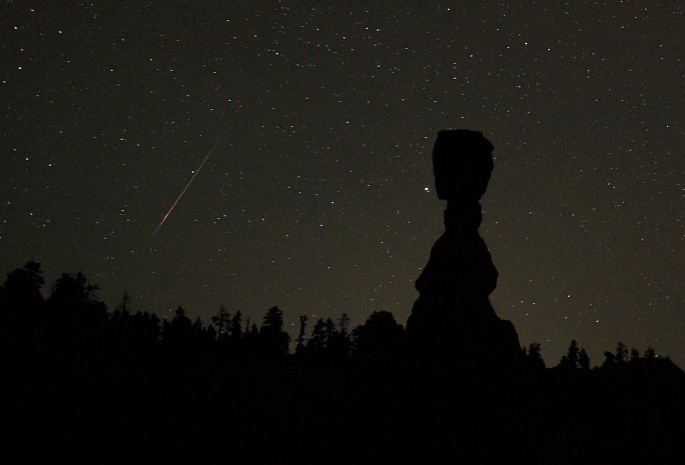This year, October sky will host two new moons or Black Moon, a Super Moon, Draconids and Orionids Meteor Shower. Sky gazers must prepare themselves for a spectacular opportunity to witness stunning celestial events peaking this month. Here is a brief guide to the major astronomical events occurring in the tenth month the year.
New Moon/ Black Moon: According to Sea Sky, the first New Moon of the month emerged on Oct. 1 at 00:11 UTC. At this time, the moon was not visible providing a great opportunity to astronomy enthusiasts to observe other faint celestial object.
This event is also known as Black Moon. According to CNN, the phase occurred on the late night of Sept. 30, which was already Oct. 1 in Eastern Hemisphere. Thus, it was the second new moon in a single calendar month of September 2016
Full Moon: This October will see the Full Moon rising on Oct. 16. The phase will reach its peak at 4:23 UTC. It is said to be the Supermoon because it will be closest to the Earth. It will appear bigger and brighter than the usual. It happens to be the first of the three Supermoons of this year. It is also known as Full Hunters Moon, Travel Moon and the Blood Moon.
New Moon: On Oct. 30, another New Moon will emerge and the phase occurs at 17:38 UTC. The next black moon will not appear until July 31, 2019.
Draconids Meteor Shower: October's Draconids, also known as Giacobinids, is a minor annual meteor shower. It radiates from the constellation called Draco the Dragon and it originates from comet 21P/Giacobini-Zinner. The shooting star event peaks on the evenings of Oct. 7, according to Earth Sky. For the best view, it is advised to witness the meteor shower from a dark location, away from city lights.
Orionid Meteor Shower: This is a prolific meteor shower that is connected with Halley Comet. Its radiating point lies in the constellation Orion. It is an annual meteor shower which peaks in October, producing up to 50 - 70 meteors per hour. According to Earth Sky, it will peak at late evening of Oct. 20 until wee hours of Oct. 21. No special equipment is required to observe the spectacular vision. One must ensure that the city lights do not hinder the view.
In addition, Uranus will be at its closest approach to Earth on Oct. 15. On this day, the planet will appear brighter than usual and it will be the best time to view Uranus. However, considering the planet's distance from Earth, it will not appear bigger than a small dot even after using the most powerful telescopes.



























